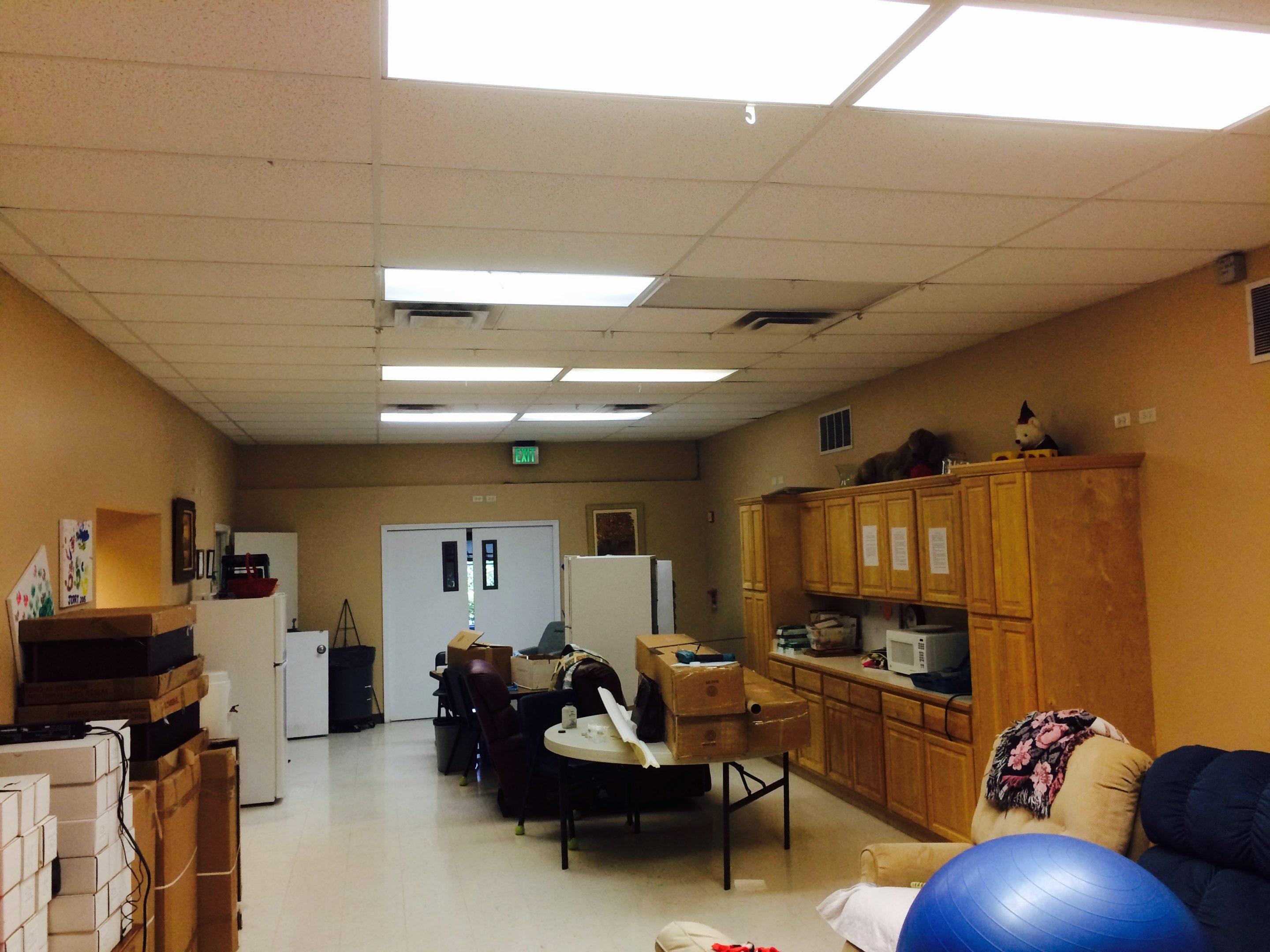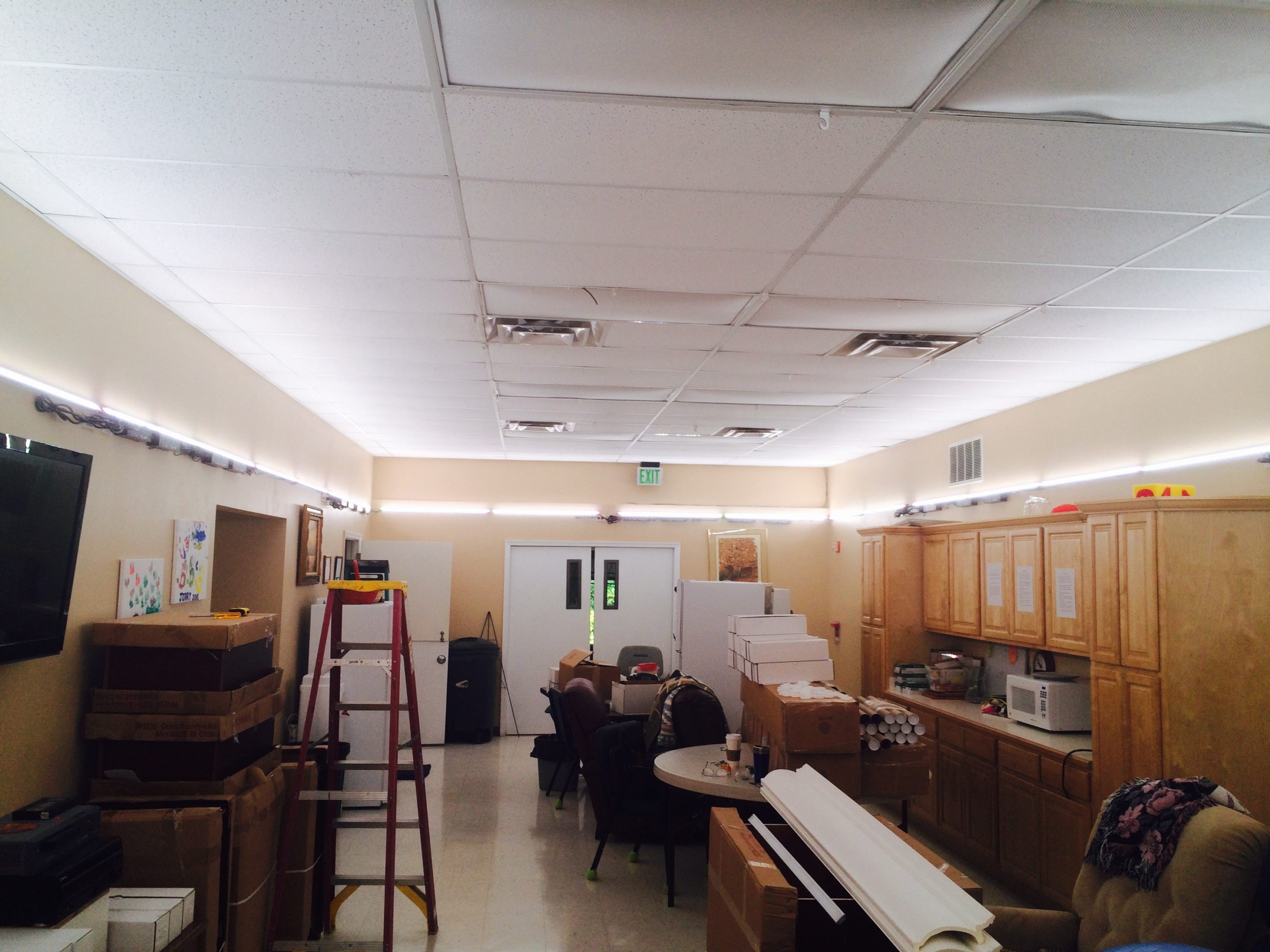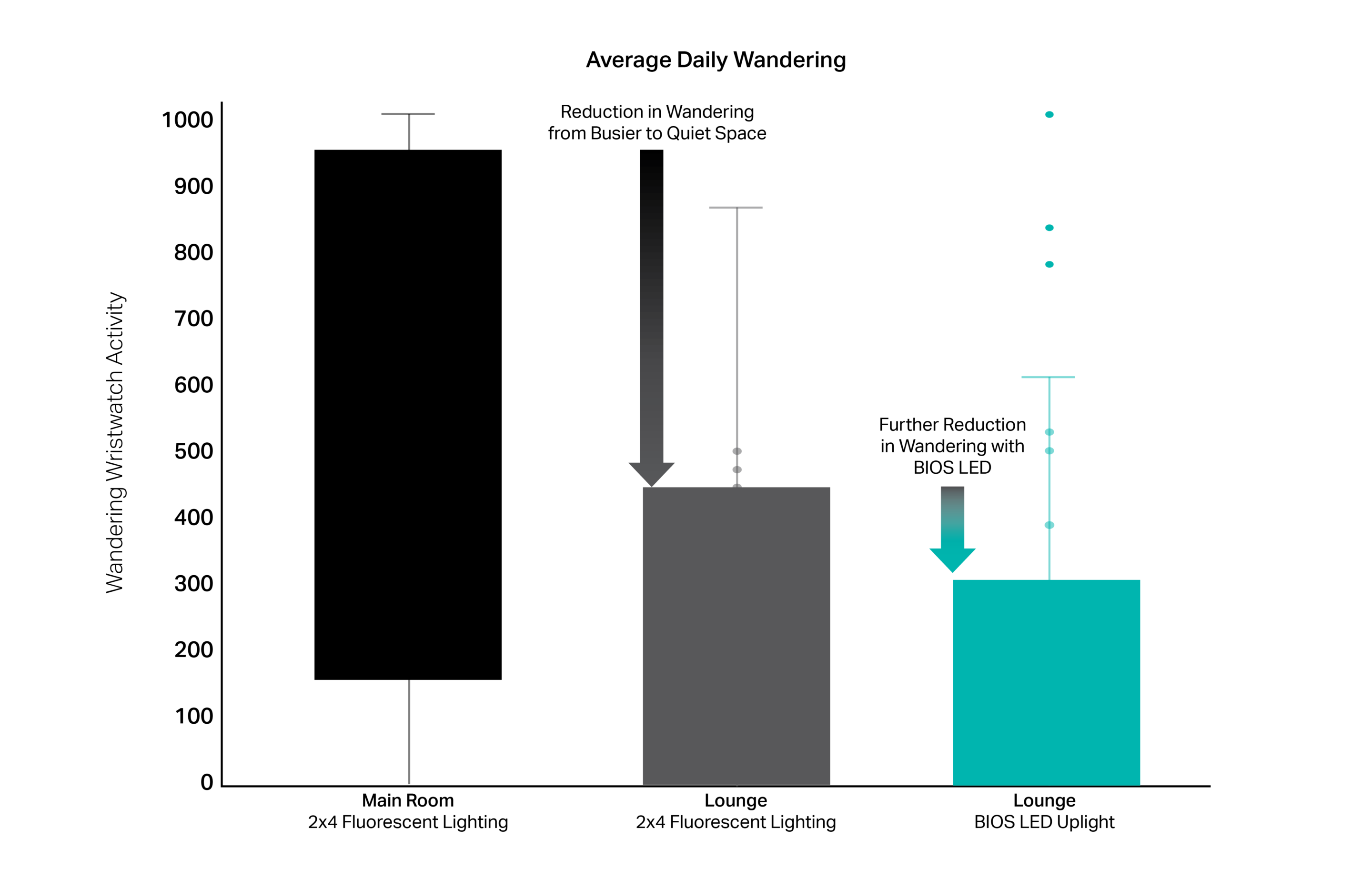Joe’s Club – Adult Day Health Care
Case Study
Case Study Context
1 in 8 people age 65 and older will be diagnosed with Alzheimer’s disease1. With this diagnosis comes many mood, memory, and behavioral changes, including uncharacteristic and problematic behavior, such as increased wandering. Wandering can be a source of concern in many ways, placing additional stress on caregivers as well as increasing the risk of injury to the wanderer. Because of the potential danger to themselves and caregivers, Alzheimer’s patients who wander are often prescribed medication. While these medications may inhibit wandering, they are also known to lead to an increased risk of falls. This study investigates the use of circadian lighting in a daytime adult health care facility as a more holistic approach to help reduce wandering ..
1 in 8 people age 65 and older will be diagnosed with Alzheimer’s diesease1
Joe’s Club Background
Joe’s Club is an Adult Daytime Health Care Facility located in Melbourne, Florida. Joe’s Club was specifically interested in reducing wandering among their occupants. They reached out to BIOS to engage in a study to test if improved light exposure would reduce occupant wandering at their facility.
The Joe’s Club facility includes two (2) rooms where occupants spend their days between the hours of 7am and 5pm and engage in a variety of activities. The first space is the “Main Room”, it is a large space where daily group activities and other programming occurs. The second space is the “Lounge”, a quieter space where activities for smaller groups takes place.
Lighting Design Strategy
The existing lighting at Joe’s Club, in both the Main Room and Lounge, included traditional recessed 2×4 fluorescent troffers. This study focused on updating the lighting in The Lounge only and did not provide a lighting intervention in the Main Room. The lighting intervention needed to work with the existing space and building conditions and involve minimal construction.
With these constraints in mind, BIOS lighting was integrated into a perimeter wall mounted uplight in the Lounge. The perimeter uplight was tied to a switch next to the existing switch for the overhead fluorescent lighting. This allowed the facility to easily turn on/off the BIOS perimeter uplight.
Study Design
The study included four (4) occupants, each of whom had an established history of wandering. For this study, each participant wore a MotionWatch 8 activity tracking wristwatch from “cam’ntech”. The activity of each participant was recorded for approximately 30 days, during which time they each spent a different amount of time in the Main Room and the Lounge, at the discretion of their caregivers.


Joe’s Club “Lounge” – Existing 2×4 Troffers

Joe’s Club “Lounge” – BIOS Perimeter Uplight
Lighting Schedule
Lighting Schedule: Over the 30-day period, each participant spent a different amount of time in The Lounge, based on the participant’s behavior/mood as determined by the caregiver. Of the days the participants spent in The Lounge, some days the BIOS LED uplight was on and other days the 2×4 fluorescent troffers were on. The type of lighting used on any given day in The Lounge was left to the discretion of the caregiver; it was either fluorescent 2×4’s or BIOS LED uplight, the 2×4 fluorescent troffers and BIOS LEDs were never on at the same time during this study. Caregiver’s did not have a set schedule for using the BIOS LED uplight and alternated randomly which days used BIOS LEDs and which used the existing fluorescent lighting.
Study Results
The activity data from the study revealed that there was a systematic major positive effect on wandering (wandering was reduced) as the result of simply moving the occupants from the busier Main Room to the quieter Lounge space with no change to the lighting conditions. Additionally, the data shows incremental improvements to wandering with the use of BIOS lighting in The Lounge.
From an order of magnitude standpoint, the data shows that moving the participants from a louder to more quiet space had the greatest positive impact. In addition, using BIOS Circadian Lighting further improved the outcomes, helping to reduce wandering as well.
Ultimately, staff and family reported that participants were calmer and more willing to participate in activities under the BIOS LED lighting.
BIOS Lighting Solutions
BIOS Lighting developed SkyBlue® LED circadian lighting technology to increase beneficial physiological effects of light for daytime use. BIOS also offers a Dynamic circadian lighting solution with BioDimming™ for day-to-night use. However, for a daytime use facility like Joe’s Club, the dynamic LED technology was not required.

“Participants were calmer and more willing to participate in activities under BIOS LED Lighting” – Joe’s Club Staff